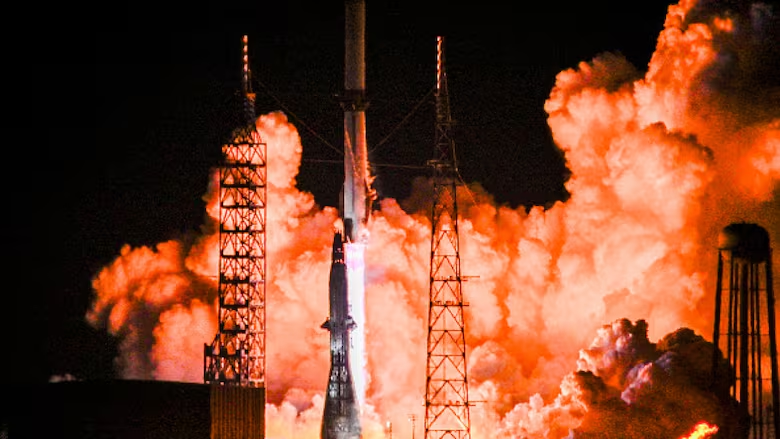
Amateur Radio on the International Space Station (ARISS) is a program that allows amateur radio enthusiasts, students, and educators to communicate directly with astronauts aboard the ISS. Through scheduled contacts and spontaneous transmissions, ARISS connects people on Earth with space, offering a unique hands-on experience in radio communication and STEM education. This global effort brings space exploration closer, inspiring curiosity about science and the cosmos, while making the wonder of space more accessible to the general public.
Frequencies that are being used by the ARISS
Voice and SSTV Downlink: 145.800 MHz (Worldwide)
Voice Uplink: 144.490 MHz for ITU Regions 2 and 3 (The Americas and the Pacific and Southern Asia)
Voice Uplink: 145.200 MHz for ITU Region 1 (Europe, Russia and Africa)
VHF Packet Uplink and Downlink: 145.825 MHz (Worldwide)
UHF Packet Uplink and Downlink: 437.550 MHz
VHF/UHF Repeater Uplink: 145.990 MHz (PL 67 Hz)
VHF/UHF Repeater Downlink: 437.800 MHz
Source https://www.ariss.org/contact-the-iss.html
How to Track the International Space Station (ISS)
The International Space Station (ISS) is one of the most remarkable engineering achievements of humanity, orbiting Earth at an average altitude of 420 kilometers (260 miles). Its bright, fast-moving presence in the night sky has fascinated millions of people around the world. Fortunately, you don’t need specialized equipment to spot or track the ISS – with the right tools and a little preparation, anyone can see it passing overhead. Here’s how you can track the ISS and catch a glimpse of it with your own eyes.
1. Understanding the ISS Orbit
The ISS orbits Earth approximately once every 90 minutes, traveling at a speed of 28,000 km/h (17,500 mph). Because of its high altitude and fast speed, the station becomes visible only when it reflects sunlight, usually just after sunset or before sunrise. It appears as a bright, steady point of light moving quickly across the sky, not blinking like an airplane. The station can sometimes be visible for a few minutes, depending on your location and the time of day.
2. Using NASA’s Spot the Station
NASA offers a service called “Spot the Station,” which provides personalized alerts when the ISS will be visible in your area. You can sign up to receive text or email notifications about the best viewing opportunities, along with specific details like the date, time, and direction to look.
Steps:
- Visit NASA’s Spot the Station website.
- Enter your location (or allow the site to use your device’s location).
- Sign up for email or SMS alerts based on when the ISS will be visible in your area.
This is one of the easiest ways to stay updated about the station’s whereabouts.
3. Using Mobile Apps to Track the ISS
Several smartphone apps can help you track the ISS in real-time, making it easy to know when and where to look. Here are some popular options:
1. Heavens-Above:
This app provides real-time information on satellite passes, including the ISS. You can check the visible passes for your location, view maps of the station’s path, and see detailed information about its trajectory.
2. ISS Tracker:
ISS Tracker shows the real-time position of the ISS on a world map. It offers details on upcoming visible passes and includes an augmented reality feature to help locate the station in the sky.
3. GoISSWatch:
An iOS-specific app, GoISSWatch offers real-time ISS tracking and notifications about passes. It also shows the station’s current location relative to your position and predicts when it will be visible from your location.
How to Use the Apps:
- Download and install your preferred app.
- Input your location or allow the app to access your GPS.
- Check for upcoming visible ISS passes based on your location and get reminders before it passes over.
4. Tracking ISS Online with Live Maps
If you don’t have a smartphone or prefer to track the ISS from a computer, several websites provide live maps showing the current position of the ISS.
1. Heavens-Above (Web Version):
Similar to the app, the Heavens-Above website offers real-time tracking, upcoming visible passes, and detailed orbital information.
2. N2YO.com:
N2YO provides a live map that shows the current location of the ISS and upcoming passes over your location. You can view detailed tracking data, including speed, altitude, and the time of the next visible pass.
3. Satflare:
This website offers real-time satellite tracking, including the ISS, with a focus on providing visual representation of its current orbit.
5. Radio Communication and ARISS
For amateur radio operators and space enthusiasts, tracking the ISS offers another exciting possibility: contacting the astronauts through radio. The ISS is equipped with amateur radio transceivers that allow two-way communication with licensed amateur radio operators on Earth. The ARISS (Amateur Radio on the International Space Station) program supports this, giving enthusiasts a chance to talk to the astronauts or receive Slow Scan TV (SSTV) images broadcast from the station.
To time your radio contact attempts, you’ll need to know when the ISS is passing overhead and within radio range. This is where tracking tools and apps come in handy. By checking the ISS’s path, amateur radio operators can plan their communication sessions with the station.
6. Knowing the Best Time to Spot the ISS
The ISS is only visible during dawn and dusk. Here are a few tips to maximize your chances of seeing the station:
- Clear Skies: Cloud cover will block your view of the ISS. Check the weather forecast and aim for a clear night.
- Timing: The station is best seen within a couple of hours after sunset or before sunrise when the sky is dark enough, and the ISS is illuminated by the sun.
- Direction: When you receive an alert or use an app, it will tell you which direction the ISS will appear (e.g., from the southwest) and how high it will rise in the sky. Be sure to have a clear view of the horizon in that direction.
Tracking the International Space Station is a fun and educational way to connect with human space exploration. With tools like NASA’s Spot the Station, mobile apps, and live tracking websites, anyone can easily follow the ISS’s path and observe its passes from the ground. Whether you’re just watching it pass overhead or attempting to make radio contact, tracking the ISS brings space a little closer to home.




Leave a Reply